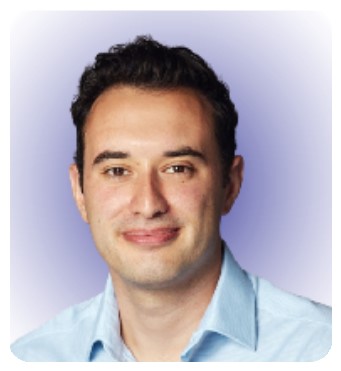Subscapularis lengthening with synthetic augmentation can be useful in the management of shoulder stiffness resistant to conventional treatment after Putti-Platt procedure.
Dr. Howell Fu, Department of Orthopaedics, South West London Elective Orthopaedic Centre, Epsom, England. E-mail: howell.fu@nhs.net
Introduction: The Putti-Platt procedure is a historical technique for anterior shoulder stabilization, largely abandoned because it severely restricts movement, and causes arthritis and chronic pain. Patients continue to present with these sequelae, which can be difficult to manage. Here, we present the first published subscapularis re-lengthening for the reversal of Putti-Platt.
Case Report: Patient: A 47-year-old Caucasian manual worker presented 25 years post-Putti-Platt, with chronic pain and movement restriction. External rotation was 0°, abduction was 60°, and forward flexion was 80°. He was unable to swim and struggled to work. Multiple arthroscopic capsular releases had provided no benefit. Technique: The shoulder was opened through the deltopectoral approach, and a coronal Z-incision lengthening tenotomy was made in subscapularis. The tendon was lengthened by 2 cm and the repair was reinforced using a synthetic cuff augment.
Results: External rotation improved to 40°, and abduction and forward flexion to 170°. Pain resolved almost completely; Oxford Shoulder Score at 2-year follow-up was 43 (22 pre-operative). The patient returned to normal activity and reported complete satisfaction.
Conclusion: This is the first application of subscapularis lengthening to Putti-Platt reversal. Two-year outcomes were excellent, demonstrating potential for significant benefit. Although presentations like this one are rare, our results support the potential of subscapularis lengthening (with synthetic augmentation) in the management of stiffness resistant to conventional treatment after Putti-Platt procedure.
Keywords: Subscapularis lengthening, Putti-Platt, chronic shoulder pain, reversal.
The Putti-Platt procedure is a historical technique for the stabilization of recurrent anterior dislocation. First published in 1948, it is a non-anatomic repair which uses the subscapularis muscle to tighten and support the joint anteriorly [1]. It is easier to perform than the open Bankart repair and effective at preventing recurrent dislocation [2], and it enjoyed a period of popularity as a treatment for recurrent shoulder instability, particularly in the military [1]. As time went on, it became clear that patients suffered an unacceptably high rate of degenerative arthritis, chronic pain, and weakness [2, 3, 4]. Furthermore, the Putti-Platt procedure achieves stability partly by limiting external rotation [1], with a loss of up to 30° [2] or more in cases of over-tightening. This has a severe impact on shoulder function, ability to work, and quality of life for many patients. A number of patients require repeated interventions, including shoulder arthroplasty [5]. For these reasons, the Putti-Platt procedure is now rarely performed in developed countries. Subscapularis lengthening has been used to address anterior soft-tissue contractures, secondary either to Erb’s palsy [6], and to osteoarthritis, as part of shoulder arthroplasty [7]; there is no previous report in the literature of its application to the reversal of the Putti-Platt procedure. Here, we present a modification and novel application of the technique, which resulted in the successful reversal of a historical Putti-Platt operation, relieving both chronic pain and functional limitation.
A 47 year-old right-handed forklift operator and landscaper presented with chronic right shoulder pain. He had suffered a traumatic shoulder injury 25 years previously, in the military in the 1990s, with resulting instability which was treated with a Putti-Platt procedure the following year. He had suffered from chronic, constant shoulder pain, and stiffness ever since. He was unable to abduct above shoulder level, had been unable to swim for 20 years, and struggled to work, given the manual nature of his job. He had undergone multiple surgeries, including arthroscopic subacromial decompression, acromioclavicular joint excision, and anterior capsule release with biceps tenodesis, none of which gave significant benefit. He was otherwise fit and well, with a medical history of post-traumatic stress disorder relating to the original injury, and a whiplash injury to the neck and trapezius resulting from a road traffic collision 2 years prior. On examination, there was complete loss of external rotation. Internal rotation was limited to the lumbar spine, abduction to 60°, and forward flexion to 80°. Magnetic resonance imaging of the shoulder showed early posterior glenohumeral osteoarthritis. Steroid injection of the acromioclavicular joint and glenohumeral joint provided no benefit. A decision was made to reverse the Putti-Platt procedure with a modified Neer’s subscapularis lengthening, with the aims of improving pain and restoring external rotation and abduction.
The Putti-Platt technique
The Putti-Platt technique divides and advances the subscapularis, creating a double layer of muscle and tendon to stabilize the glenohumeral joint anteriorly. Access is gained with anterior approach through the deltopectoral groove. The tendon of subscapularis is divided 2.5 cm from its insertion and the joint capsule is opened. The distal stump of the tendon is sutured across the joint, to either the anterior labrum or the deep surface of the stripped capsule. As part of this step, the scapular neck is prepared to ensure that the stump adheres. The medial portion of the divided capsule is laid over to create a “double-breasted effect.” The proximal stump of the subscapularis is advanced over this repair to create an “overcoat effect,” and sutured either to the scarified tendinous cuff over the greater tuberosity, or to the bicipital groove.
Operative technique
The patient was appropriately consented for surgery over several clinic attendances and on the day of surgery. The procedure was performed under general anesthetic and a regional suprascapular nerve block, in the beach chair position with a mechanical arm holder. An arthroscope was introduced through a posterior portal and a diagnostic arthroscopy was performed. The biceps was absent from previous surgery (in groove tenodesis) and the MGHL was absent (having previously been released). The subscapularis and rotator cuff appeared normal. The labrum was degenerate anteroinferiorly with evidence of an old injury but grossly intact. The articular surface of the humerus was generally preserved. The glenoid articular surface was preserved; there was evidence of some posterior Grade II cartilaginous wear [8], but there was no subchondral bone visible or loose flaps of cartilage. There was also degenerative damage to the posterior labrum from 9 o’clock to 7:30, and scarring of the capsule. The open procedure was performed through a deltopectoral approach, with a skin incision avoiding the axillary fold, and taking the cephalic vein laterally. The coracoid was identified and the subacromial space was developed. Of note, there was significant scarring on the subscapularis tendon and strong adhesions to the underside of the conjoined tendon. The conjoined tendon was carefully dissected off the subscapularis, and the musculocutaneous nerve was identified and protected. At this point, the rotator interval was identified and opened to allow visualization of the rolled superior tendinous border of subscapularis. The anterior humeral circumflex vessels were identified and used to denote the lower border of the tenotomy. A coronal-based tenotomy was performed according to the technique described by Dilisio et al. [9]. They state that every 1 cm of lengthening produces 20° of external rotation, we aimed for a 2 cm tenotomy to achieve 40° of external rotation intraoperatively. The tenotomy was repaired with non-absorbable interrupted sutures. We introduced two modifications to Dilisio et al.’s technique. First, the tenotomy was performed in the superior 2/3rd of the tendon as the inferior third is mainly muscular and is more compliant (Fig. 1). This has the advantage of not disturbing the anterior humeral circumflex or risking close proximity to the axillary nerve since the tissues were very scarred from previous surgery. Second, we augmented the cuff repair with a synthetic cuff augment (Rotalock™ by Neoligament™ Leeds, UK) to protect the tenotomy (Fig. 1d). The wound was closed in layers with a simple dressing and protection in a shoulder sling with a body belt. The patient was discharged the same day with rehabilitation instructions and physiotherapy follow-up within 1 week.
Post-operative rehabilitation
The patient was rehabilitated in the typical manner for a large rotator cuff repair. He was placed in a sling and restricted to 30° of external rotation for 3 weeks with active-assisted mobilization within safe zones. He then progressed to unrestricted active assisted mobilization until week 6 postoperatively, and full active movements thereafter. Strengthening commenced from 3 months.
The patient was followed up to 2 years. His pain resolved almost completely. External rotation was 40° at 2 years, and oxford shoulder score improved from 22 pre-operative to 43 at 2 years (Table 1 and Fig. 2). He was able to return to work and normal activities and was very satisfied with the outcome.
The Putti-Platt procedure causes loss of external rotation and abduction and is commonly complicated by shoulder osteoarthritis and chronic pain secondary to subscapularis overtightening [1, 3]. Although the procedure has largely been superseded by newer techniques, it is still practiced in some parts of the world [2]. Even where Putti-Platt is no longer performed, patients who have undergone the procedure in earlier decades continue to present with complications [2]. The management of such patients is difficult, and they often undergo multiple procedures with little success and progress to shoulder arthroplasty [5]. A review of the literature was conducted using PubMed searches with the keywords “Putti-Platt procedure,” “Putti-Platt complications,” “Putti-Platt reversal,” and “subscapularis lengthening,” which yielded the background information previously discussed. There were no previous reports of reversal of the Putti-Platt procedure, whether using subscapularis lengthening or other techniques. Subscapularis lengthening was commonly employed in the treatment of anterior capsular contracture, before the popularization of arthroscopic techniques [10]. It continues to be used in pediatric patients with Erb’s palsy, to address anterior contractures [6], as well as in shoulder arthroplasty [7]. It is interesting that the external rotation achieved intraoperatively was maintained at 2 years. Our patient completed 2 years’ follow-up, at which point the functional outcome was excellent, with resolution of symptoms and return to normal activities. It is unknown whether the intervention will change the progression of his shoulder arthritis in the mid-to-long-term, and further, follow-up is required.
Although now rare in developed countries, patients do still face chronic pain and stiffness post-Putti-Platt, and cases which are resistant to conventional treatment present a significant management challenge. Our results support the potential of subscapularis lengthening (with synthetic augmentation) as a novel and useful surgical strategy in this situation.
Our results support the potential of subscapularis lengthening with synthetic augmentation for patients with significant loss of external rotation and no significant arthropathy following Putti-Platt procedure.
References
- 1.Osmond-Clarke H. Habitual dislocation of the shoulder; the Putti-Platt operation. J Bone Joint Surg Br 1948;30B:19-25. [Google Scholar]
- 2.Gill TJ, Zarins B. Open repairs for the treatment of anterior shoulder instability. Am J Sports Med 2003;31:142-53. [Google Scholar]
- 3.Kiss J, Mersich I, Perlaky GY, Szollas L. The results of the Putti-Platt operation with particular reference to arthritis, pain, and limitation of external rotation. J Shoulder Elbow Surg 1998;7:495-500. [Google Scholar]
- 4.Salomonsson B, Abbaszadegan H, Revay S, Lillkrona U. The Bankart repair versus the Putti-Platt procedure: A randomized study with WOSI score at 10-year follow-up in 62 patients. Acta Orthop 2009;80:351-6. [Google Scholar]
- 5.Green A, Norris TR. Shoulder arthroplasty for advanced glenohumeral arthritis after anterior instability repair. J Shoulder Elbow Surg 2001;10:539-45. [Google Scholar]
- 6.Kruit AS, Choukairi F, Mishra A, Gaffey A, Jester A. Subscapularis Z-lengthening in children with brachial plexus birth palsy loses efficiency at mid-term follow-up: A retrospective cohort study. Int Orthop 2016;40:783-90. [Google Scholar]
- 7.Braman JP, Flatow EL. Managing the tight shoulder: Subscapularis lengthening-in opposition. Semin Arthroplasty 2004;15:212-4. [Google Scholar]
- 8.Outerbridge RE. The etiology of chondromalacia patellae. J Bone Joint Surg Br 1961;43-B:752-7. [Google Scholar]
- 9.Dilisio M, Elhassan B, Higgins L, Warner J. The stiff shoulder. In: Rockwood and Matsen’s the Shoulder. 5th ed. Netherlands: Elsevier; 2017. p. 1123-50. [Google Scholar]
- 10.Gilbert A, Brockman R, Carlioz H. Surgical treatment of brachial plexus birth palsy. Clin Orthop Relat Res 1991;264:39-47. [Google Scholar]











